What types are there?
Kitchen hoods can be divided into categories depending on different parameters.
Air processing:
- Flow-through. Connects directly to the ventilation and discharges air into a special channel. Some models can also suck in fresh air, releasing it into the room. The downside of such a hood is the presence of a pipe that will have to be hidden or masked.
- Circulation. Sucks in polluted air, cleans it with carbon filters, and releases it back into the kitchen. Compared to flow-through, it is less effective and more demanding. Filters will have to be constantly changed and cleaned. However, it does not require connection to the ventilation shaft, so there is no problem with the air duct.
Control method:
- Mechanical. The simplest hood with a regular push-button panel. Found mainly in the budget segment.
- Slider. Instead of buttons – sliders. They regulate power, backlight, air flow direction. Reliable, found in many designs.
- Touch. Modern control method, often supplemented with a remote control, so it is considered the most convenient. Another plus is the ability to easily clean, due to the smooth surface. They are more expensive than mechanics and sliders.
Material:
- Plastic. Cheap, easy to care for, but not durable.
- Enameled. Cost more than plastic, but last longer. Look aesthetically pleasing, easy to care for.
- Steel. Stainless steel is lightweight, durable. Has one drawback – fingerprints constantly remain on the surface.
- Glass. Stylish, easy to care for, durable. Give preference to white tempered glass if you do not want to constantly wash dark matte from stains and streaks.
Classification by design
Structurally, kitchen hoods are divided into 3 types:
- Traditional. The classic kitchen hood is cheaper and simpler than the others. These are standard models that are hung on the wall above the hob. There are both circulation and flow-through ones. The downside is that it requires a separate place; you will have to build a box to hide it.
- Built-in. The most inconspicuous option, mounted in a hanging module of the kitchen unit above the stove. Most often, such hoods are telescopic – that is, they have a retractable panel, due to which the coverage area increases. Hoods are built not only above the stove, but also into the countertop behind the stove – during cooking, it extends and remains open, and when not needed, it simply hides in the table.
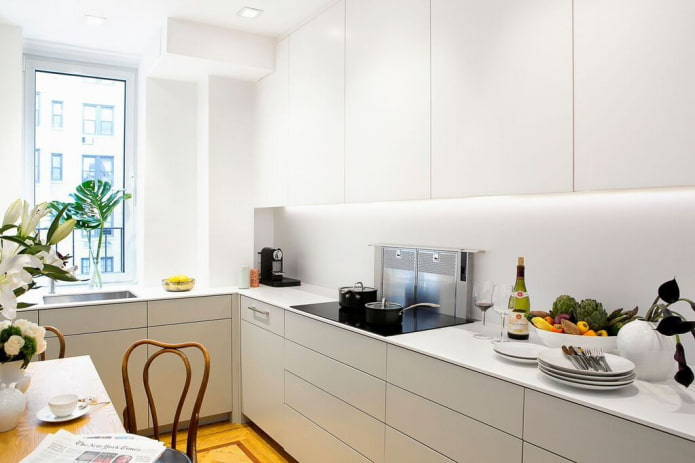
The photo shows a system built into the countertop
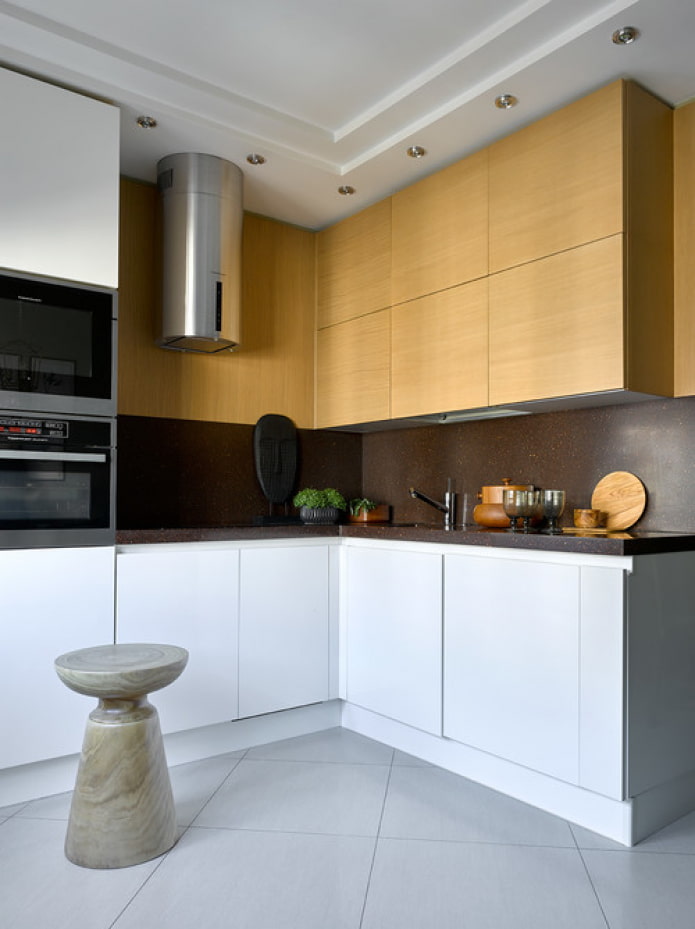
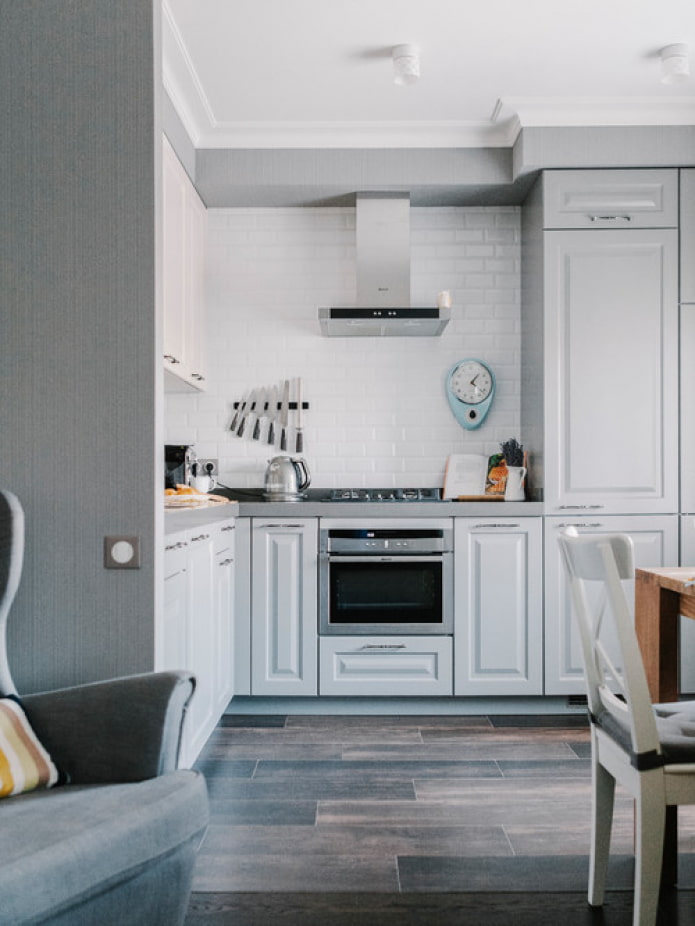
- Dome. It is considered the most effective among the others, because it captures the maximum amount of odors. In some cases, it has not only the top part, but also side shutters that prevent dirt from escaping.
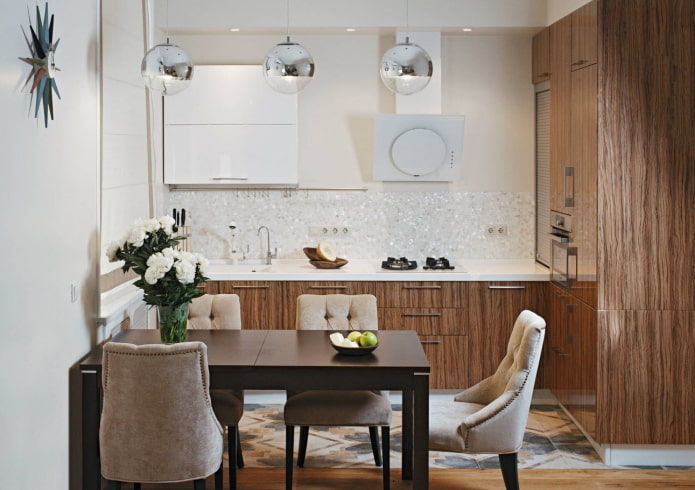
The photo shows a white modern hood in the kitchen with brown facades
Varieties by shape
There are 6 main types of hoods for the kitchen:
- Flat. It is somewhat similar to the built-in one, but is an independent element. Thanks to the flattened geometry, it will save space in the kitchen.
- Dome. We already mentioned it in the previous section. The shape of the dome literally hangs over the cooking area and absorbs all the dirt.
- T-shaped. With a panel between the pipe and the hood system itself – it is convenient to store spices, cooking accessories, decor on it.
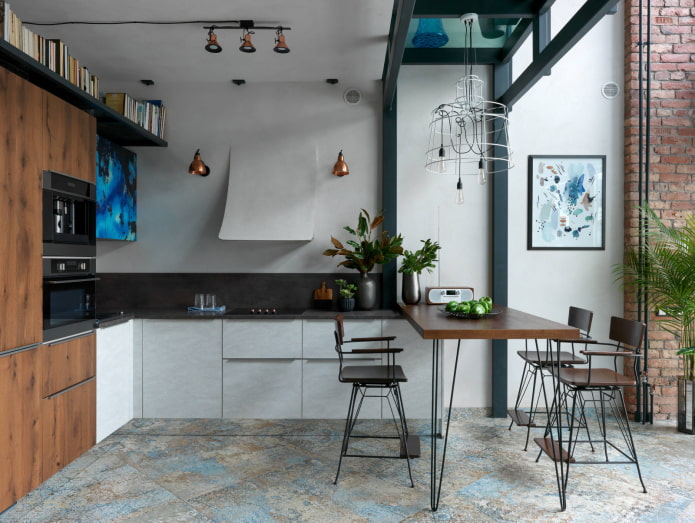
The photo shows a stylish, invisible model
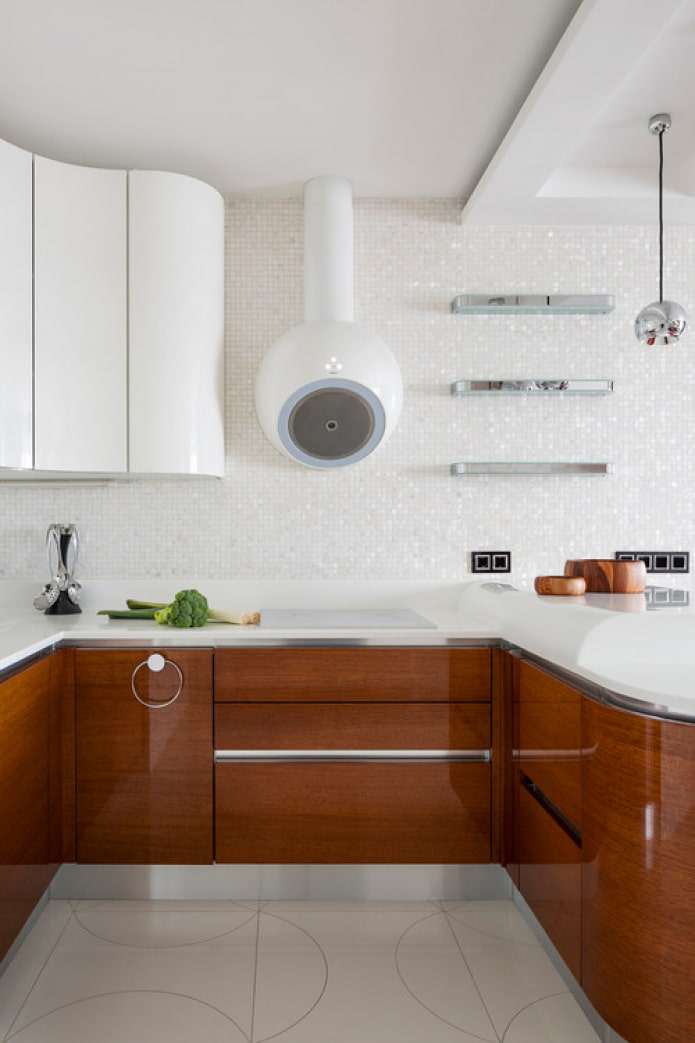
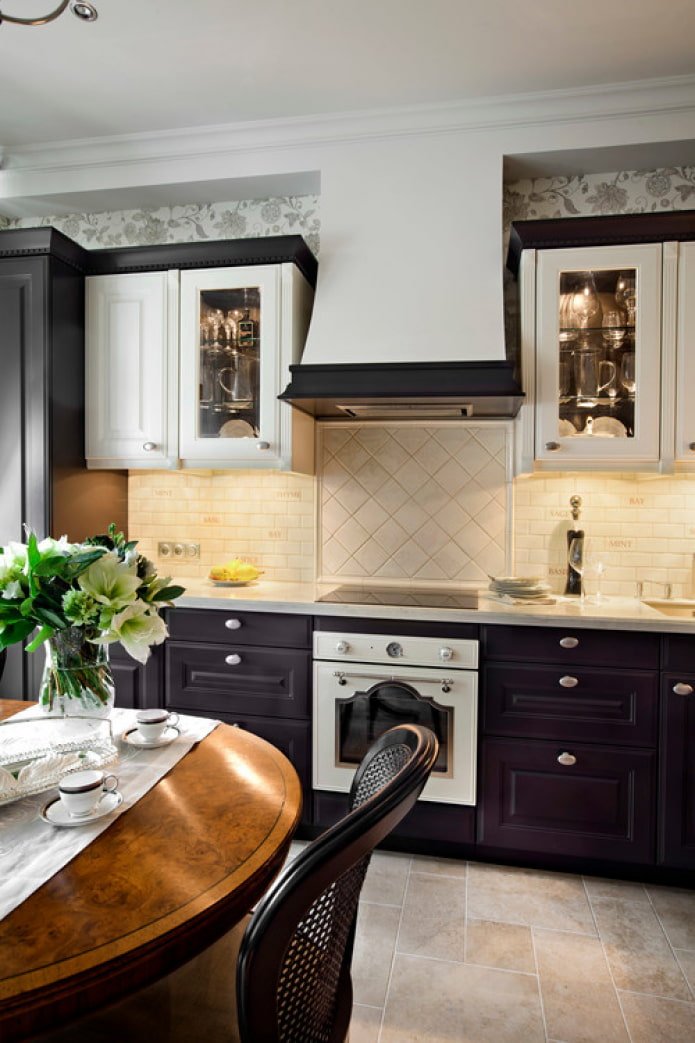
- Inclined. Perhaps has the most distinctive design – it is located at an angle relative to the hob. The main advantage of the solution is space saving and ease of access to the stove.
- Island. Most often it looks like a pipe hanging from the ceiling in the form of a cylinder or parallelepiped. It can be installed in any desired place.
- Corner. Ideal if the hob is located in the corner. Most often, the surface can be used for storage.
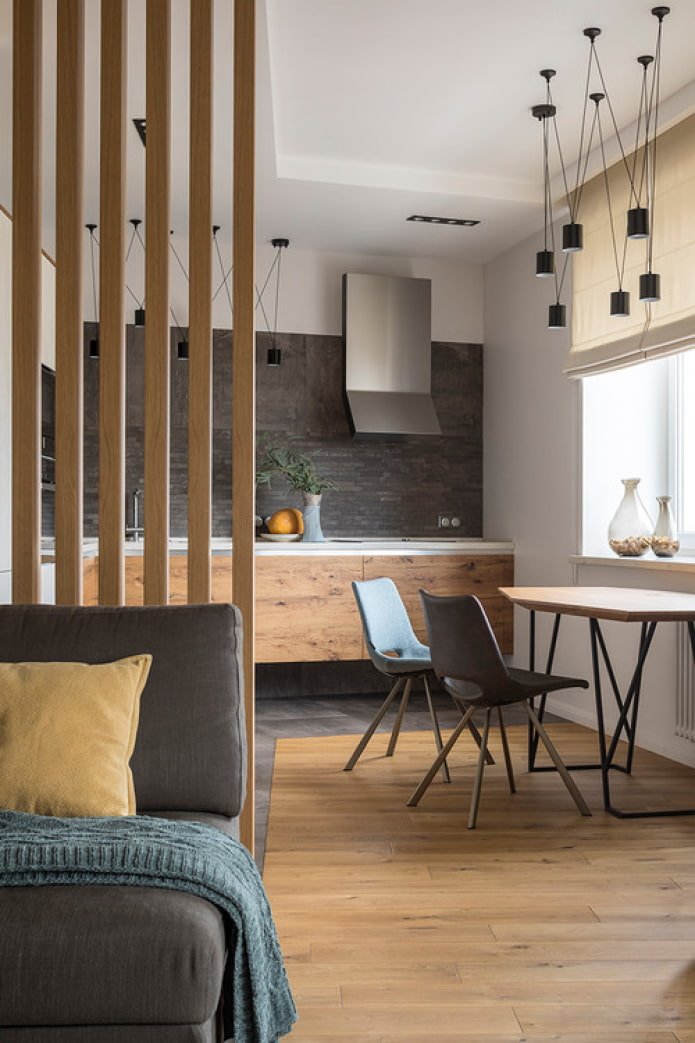
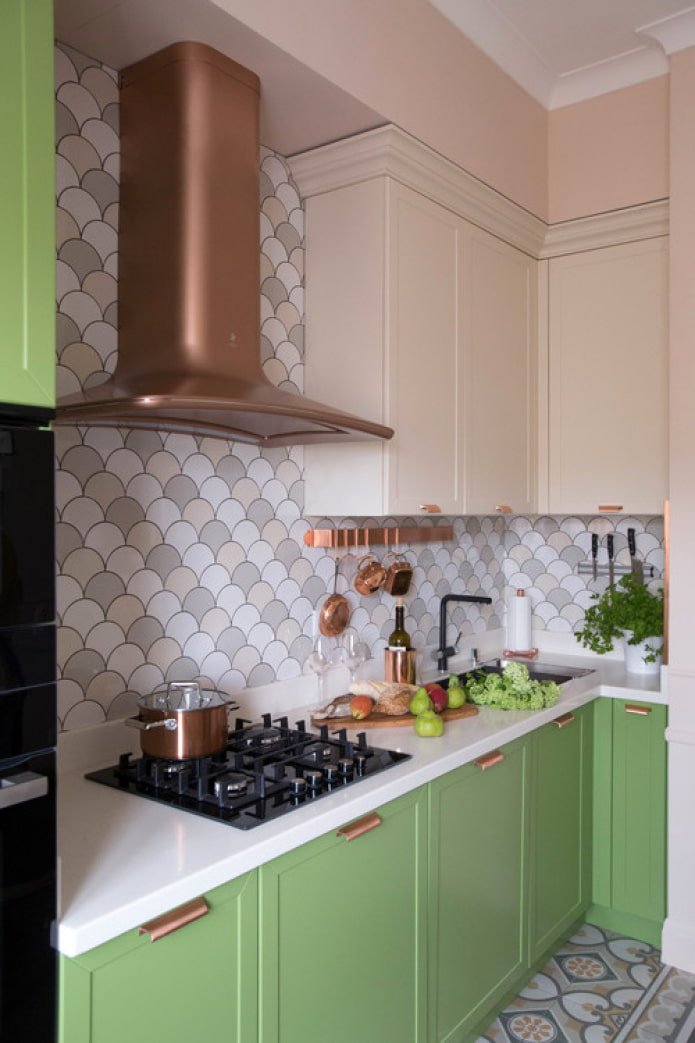
Recommendations for placement
To increase the efficiency of the hood, you need to first choose it correctly, and secondly, install it correctly. Regardless of the shape, choose one that is the same width as the stove or wider. This is the key to clean air. The depth, on the contrary, should be slightly less – otherwise you will constantly hit your head on it.
Many people believe that the hood should be located directly above the apron – that is, at a height of 60 cm. But this belief is wrong. The height of the location varies depending on the type of stove:
- 65-75 over an electric one;
- 75-85 over a gas one.
The exception is an inclined shape. It is placed 45-55 cm above the electric stove and 55-65 cm above the gas stove.
Reducing the distance helps to purify the air better, but too small a space increases the risk of damaging the system due to overheating.
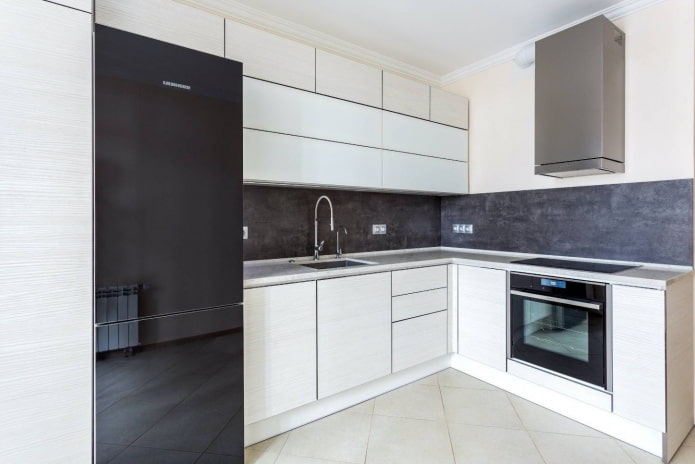
The photo shows the repetition of clear geometric lines in the equipment and furniture
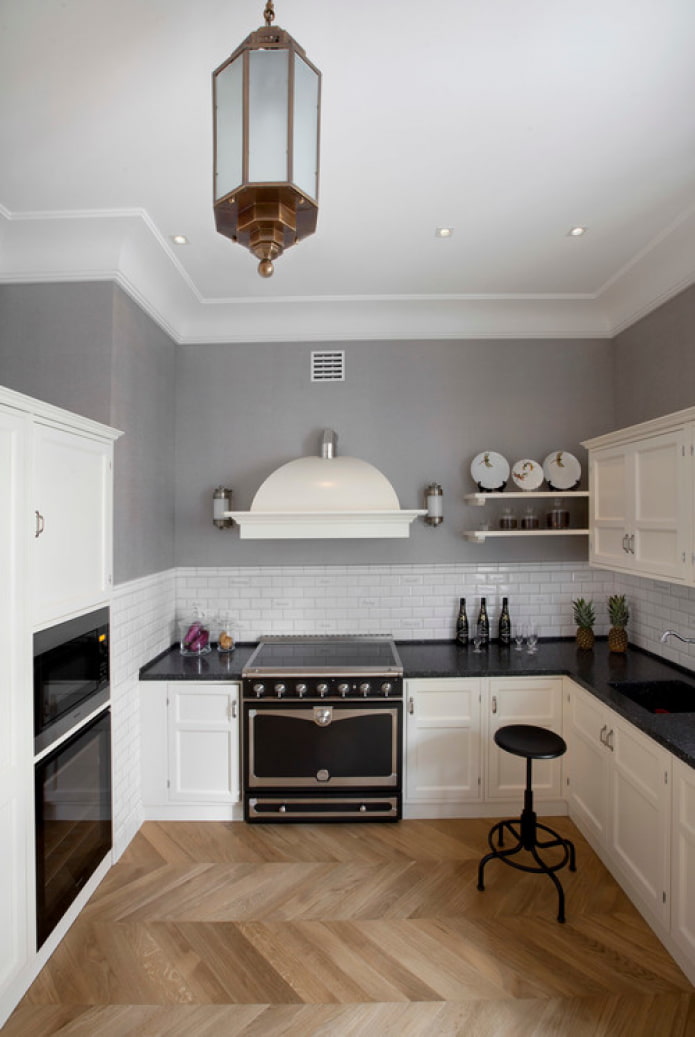
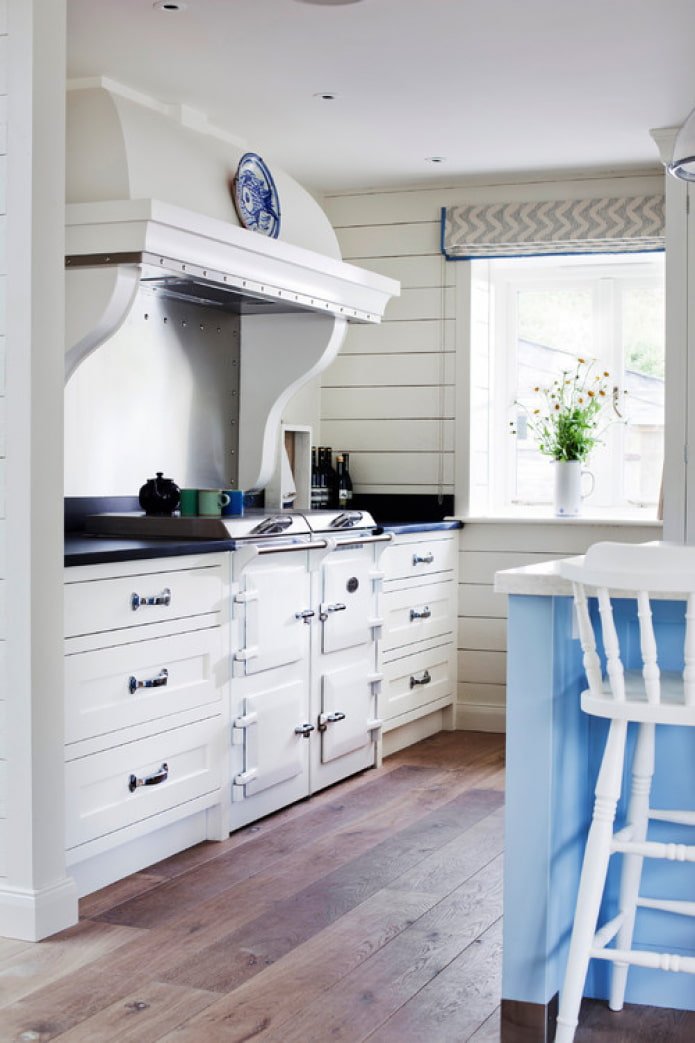
How to hide a hood?
If you bought an unsuitable model or changed the interior after installing the hood, you can hide it in a box. The advantage of this method is that there will be space above it for storing kitchen utensils.
An unusual but effective option is mirror film. Thanks to the visual illusion, everything unnecessary literally dissolves in space.
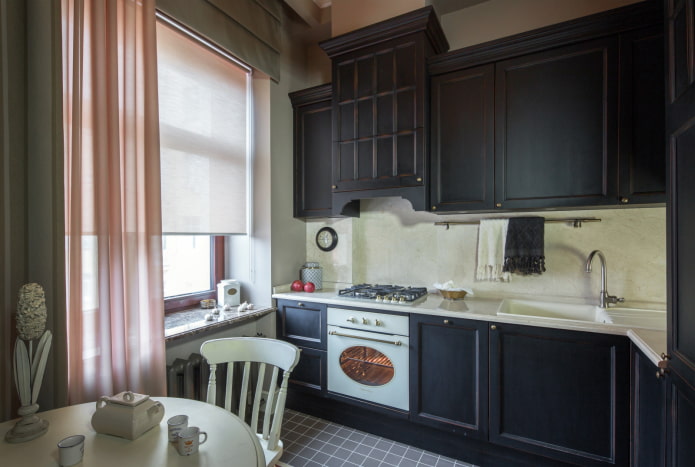
The photo shows the hood hidden in a box
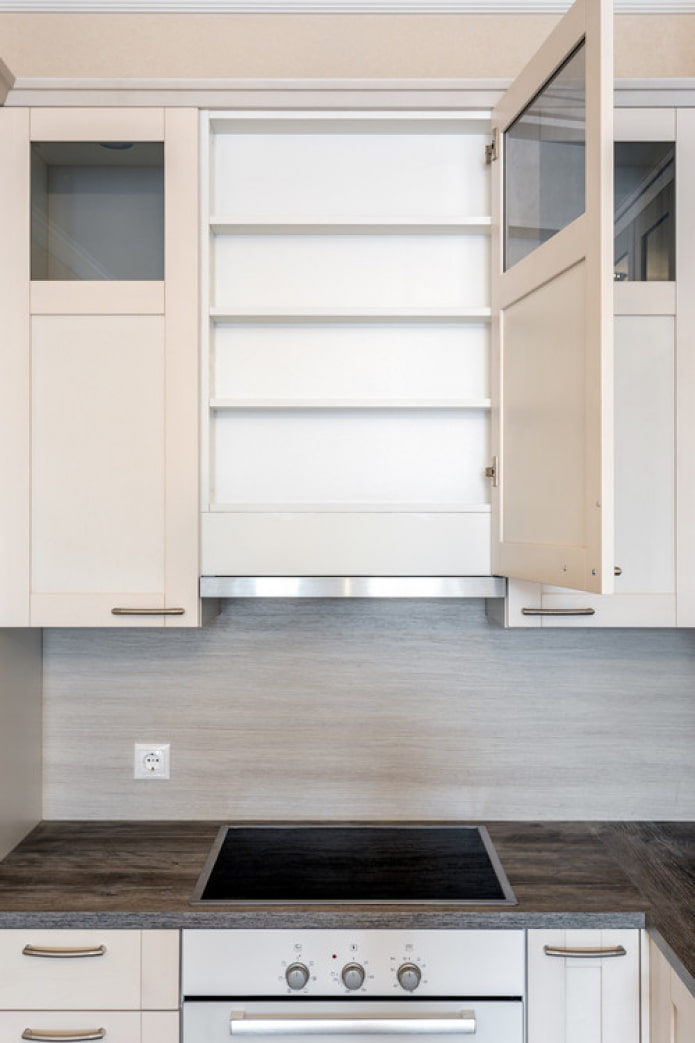
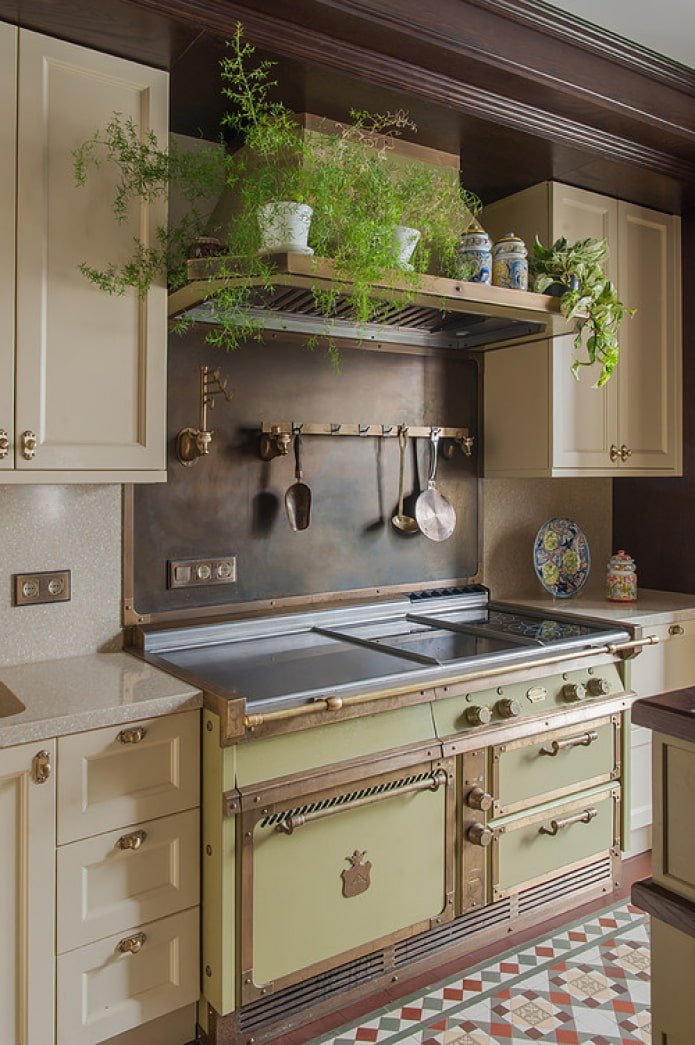
However, most often it is required to close not the exhaust system itself, but the pipe from it. There are 4 main ways to do this:
- Hide in the ceiling. A suspended or suspended ceiling structure allows you to completely hide unsightly communications. But it will have to be placed at a lower level, because standard pipes have a diameter of 10-15 cm.
- Sew up in a box. Decorative boxes are made of chipboard, MDF, wood, metal, plasterboard. This is a low-complexity job, so you can do it yourself. The disadvantage of this method is the lack of additional functionality.
- Remove the cabinet to the top row. An additional second row of hanging cabinets allows you to not only increase the storage area, but also hide the corrugation going to the ventilation.
- Decorate in the color of the walls. The method is suitable only for single-color finishing. When you repaint the round pipe to match the color of the wall behind it, it will simply disappear.
If you are not embarrassed by the fact that there is a pipe in the interior and it suits the style of the kitchen (loft, modern, hi-tech), leave it as is. Or accentuate it by painting it in any bright color.
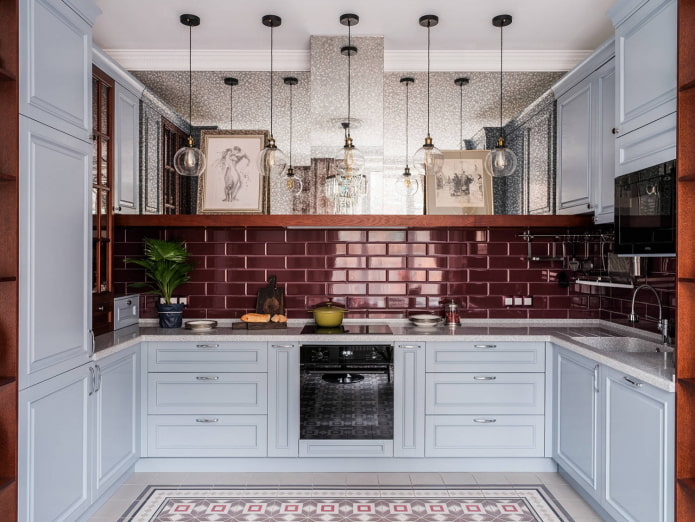
The photo shows the use of an illusion with mirror film
Interior design ideas
A hood in the kitchen interior will become a harmonious addition to the design if you choose the right model.
In a country or Provence style kitchen, a large dome hood with a carved side will become the central element. To make it even more noticeable, choose a contrasting color option.
The dome-shaped hood with gold trim will fit harmoniously into a classic interior. An alternative idea for the classic style is any hood hidden behind wooden sides under the facades.
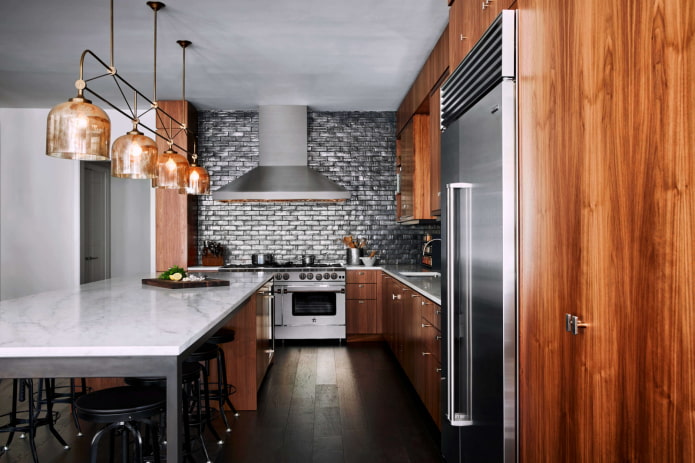
The photo shows a spacious kitchen with steel appliances
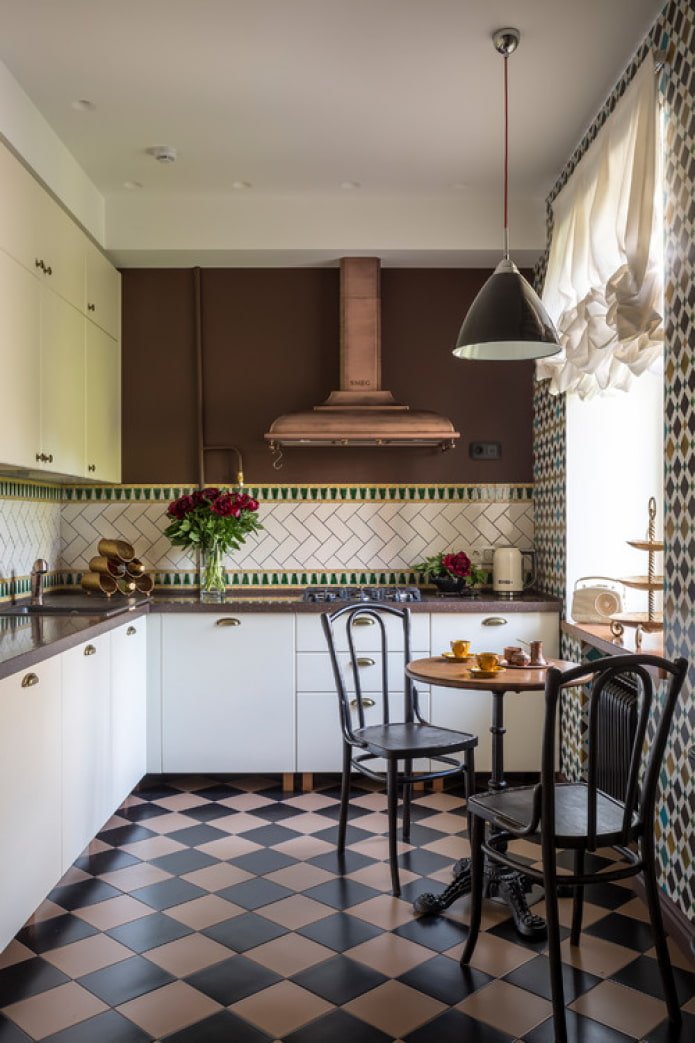
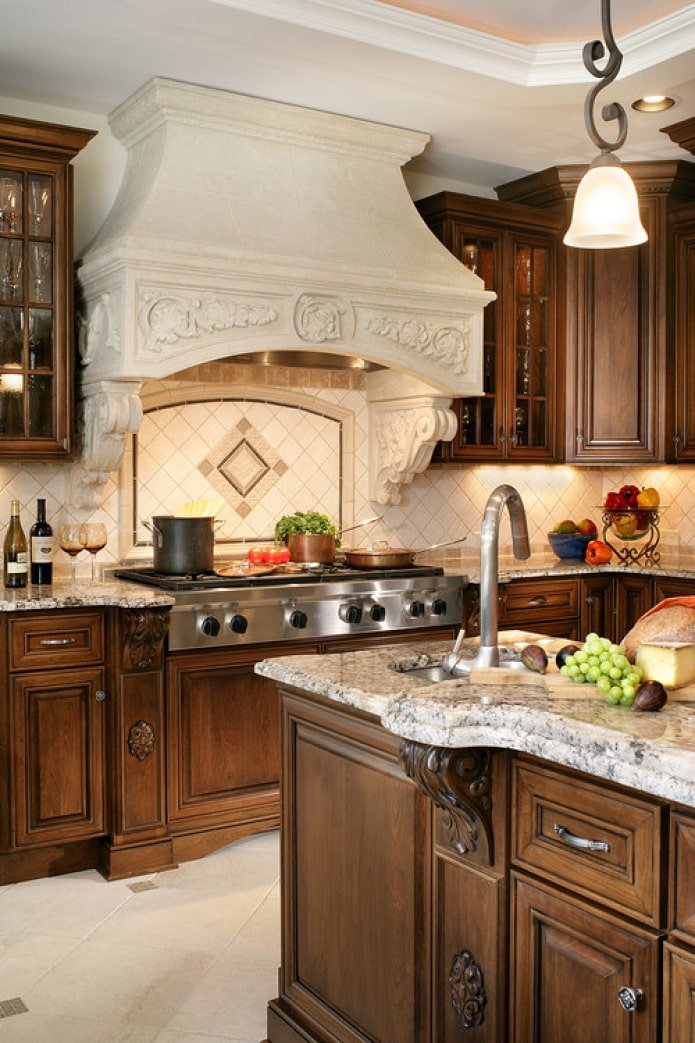
When decorating a modern kitchen in the Art Nouveau style, pay attention to the inclined glass options or modern island models.
A designer inclined tempered glass hood or a steel dome-shaped hood will also suit the high-tech style.
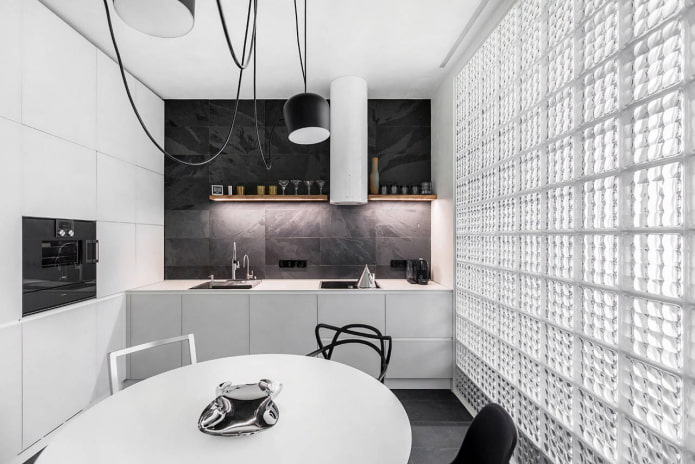
The photo shows an interior in the minimalist style
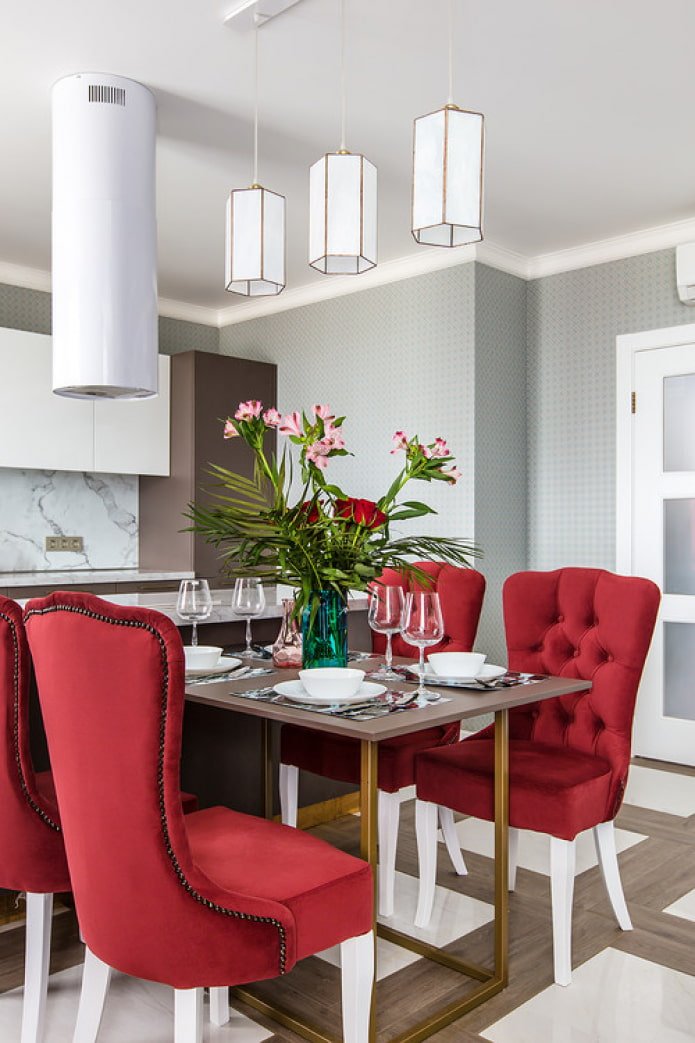
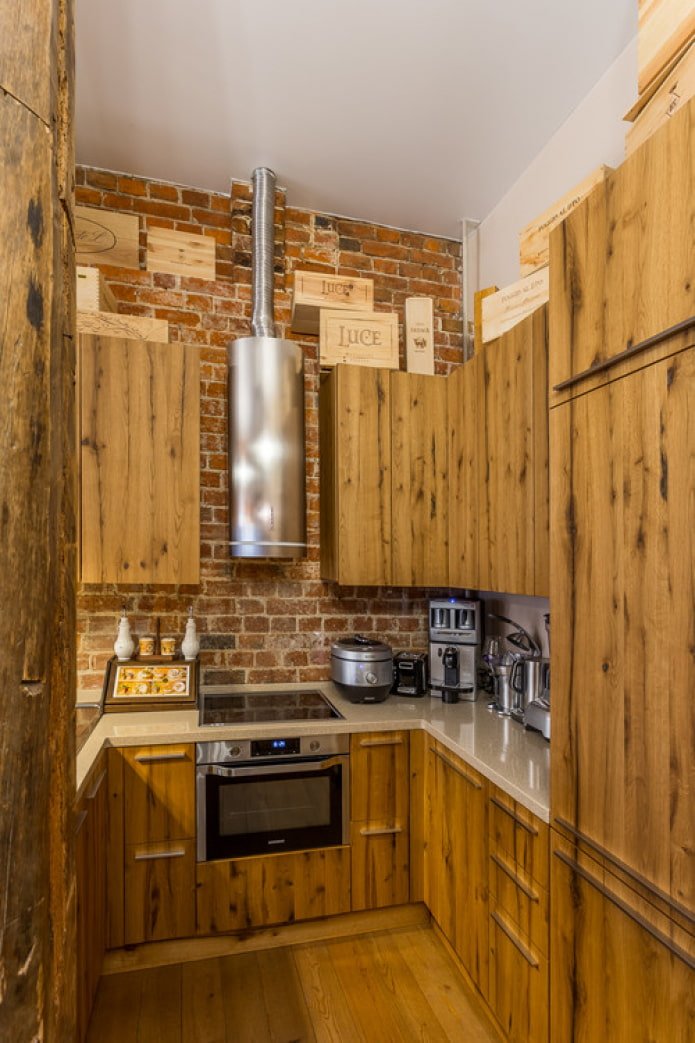
Depending on the surrounding environment, steel or black hoods are purchased for the loft. The following shapes are suitable: dome, cylindrical, rectangular.
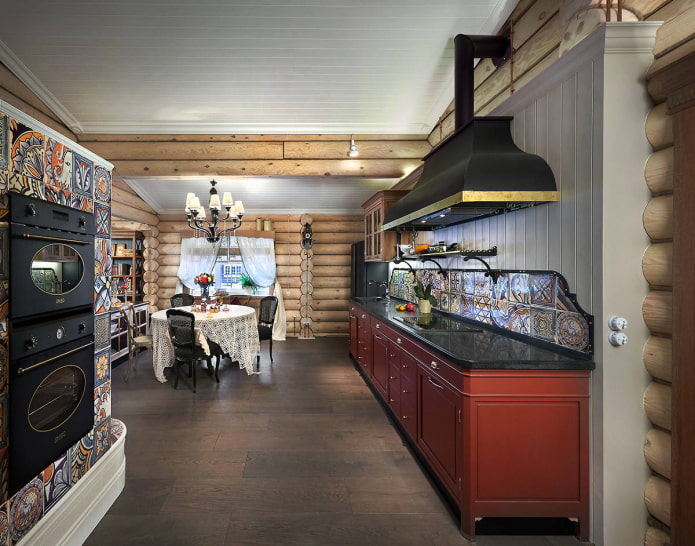
The photo shows a non-standard kitchen design in a house
Examples for small kitchens
The main task in a compact kitchen is to save space. The hood should also meet this parameter. The most laconic models are built-in or flat. Moreover, if they are circulating, you will not have to place a bulky pipe.
Despite all their advantages, models built into a cabinet or placed under it are not the most economical. There are more inconspicuous, but no less effective technologies.
Building into the ceiling will solve the problem of saving space in cabinets. If you place the hood inside a tension or hanging frame, it can remain completely unnoticed – only a decorative grille will be visible from the outside.
In a private house, it is possible to place ventilation equipment in the wall. Remaining almost invisible, it copes with its functions perfectly.
When it is too late to make changes to the project or decoration, installing a model built into the countertop will help. The hood is located in close proximity to the cooking area and efficiently draws in polluted air. And it is much easier to get to it for cleaning grease or replacing filters.
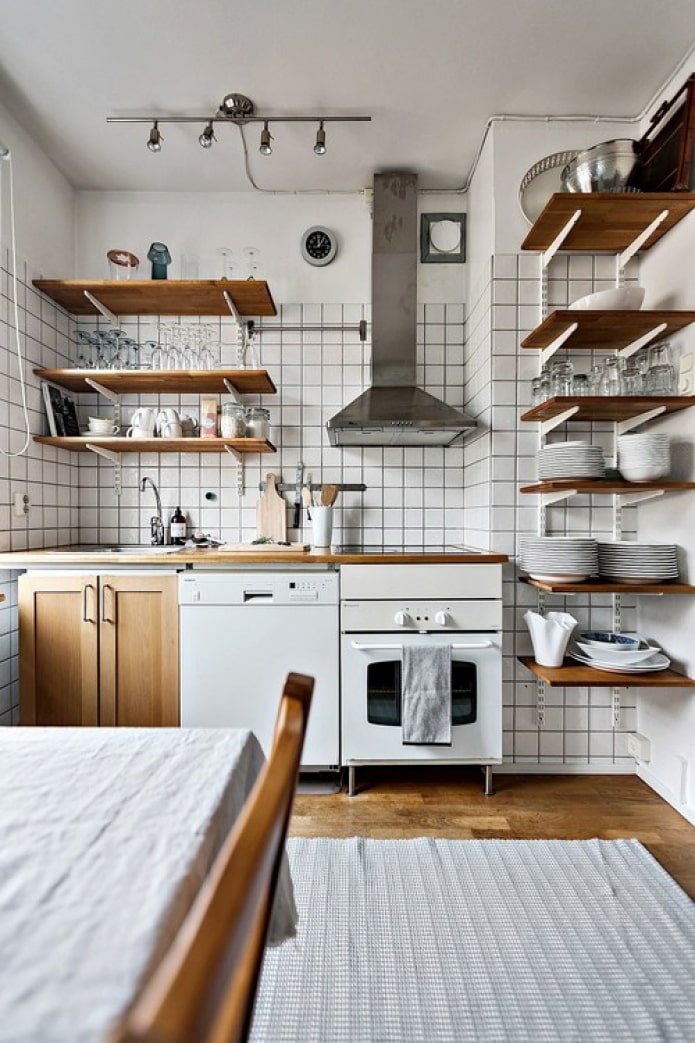
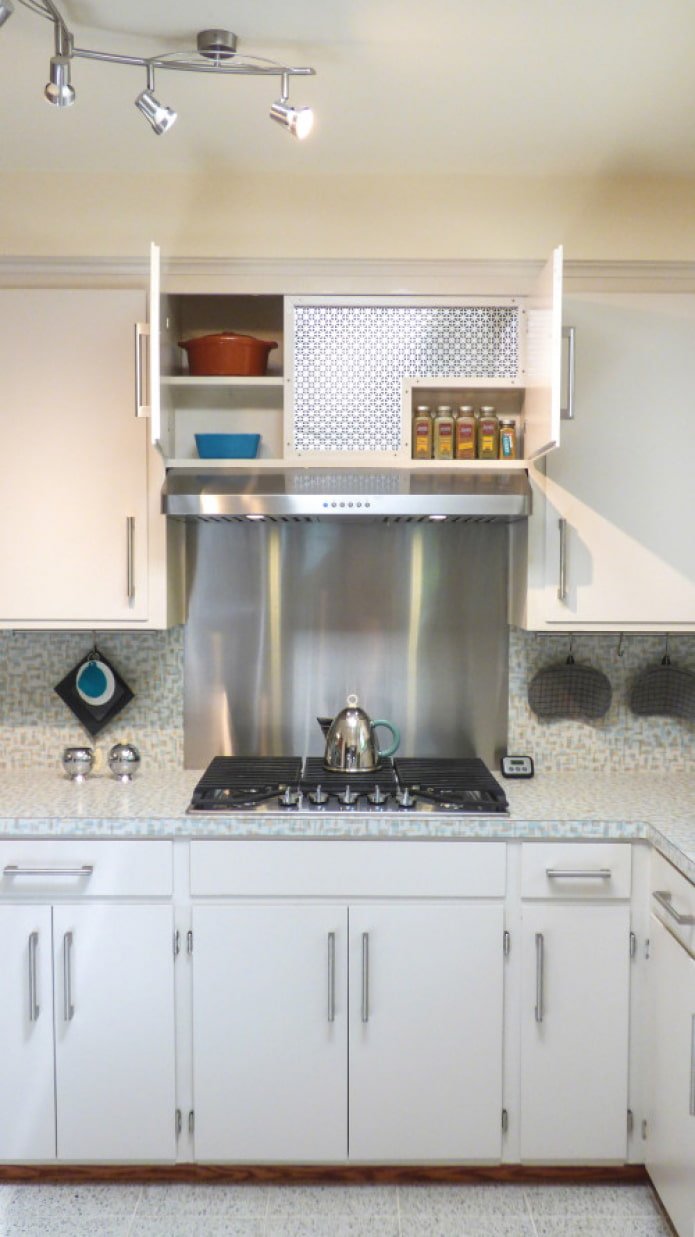
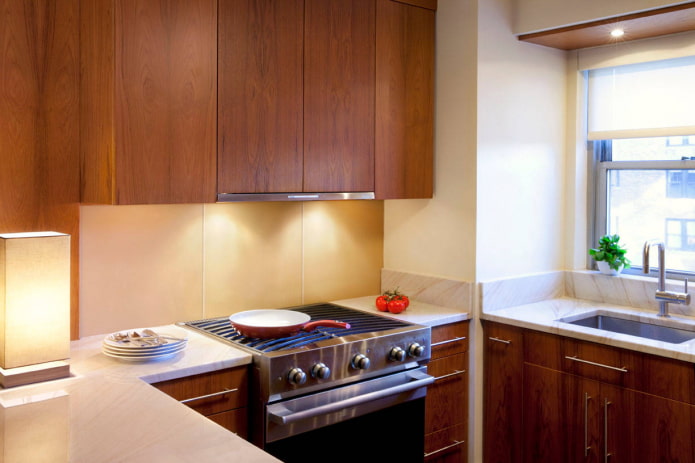
The photo shows the placement of equipment in a small kitchen
Now reading:
- High-tech hallway: 45 photos and current ideas for modern design
- Hallway: 80 photos of modern walls and cladding in the interior of an apartment.
- How to create beds in a greenhouse yourself: materials, placement and tips.
- Top 10 Combinations of Gray with Other Colors in the Interior (56 images)
- 10 Pros and Cons of Installing a Glass Partition Instead of a Shower Curtain in the Bathroom